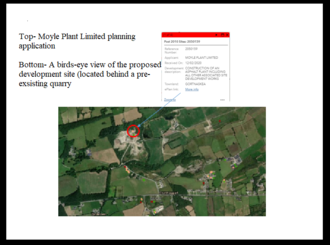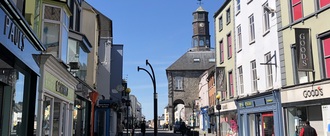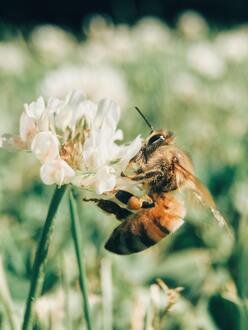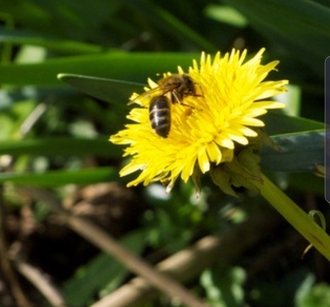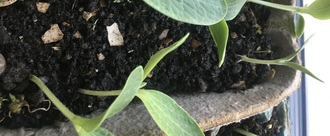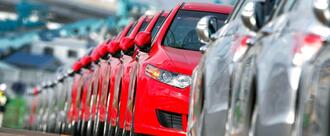- Featured
- Animal Rights
- Anti-racism
- Arts & Culture
- Children
- Climate
- Corporate accountability
- Crime
- Disability rights
- Economic
- Education
- Environment
- Food and Sustainable Production
- Gender Equality
- Governance and Transparency
- Health
- Housing
- LGBT Rights
- Mental health
- Northern Ireland
- Planning
- Privacy and Data Protection
- Rural Inequality
- Social Justice
- Trade
- Transport and Infrastructure
- Workers' Rights
- More
-
Say No to the Mow in Co. MonaghanDuring this pandemic, many of our green areas have been allowed to grow wild, with no council mowing ongoing. Which is great! Green areas have been allowed to flourish with flowers growing through them. Widespread population declines of bees and other pollinators from habitat loss are a growing concern. However, spontaneous flowers like dandelions and clover can provide pollen and nectar sources throughout the growing season....... Therefore, please don't mow, don't spray, let them grow!368 of 400 SignaturesCreated by Fridays for Future Monaghan
-
Safe Access to Bull IslandThis amenity is very important and has been enjoyed by thousands of people during COVID-19 restriction as a safe place for recreation to walk and cycle with plenty of space for physical distancing. With the lifting of car restrictions onto the Causeway and the Wooden bridge of 18th May it will no longer be possible for the majority of people of all ages to continue to enjoy this amenity safely. Bull Island is an important protected biosphere and it should be kept free from air pollution. It is the stated aim of Dublin City Council to encourage cycling and walking.1,676 of 2,000 SignaturesCreated by Donna Cooney
-
Make Wooden Bridge & Causeway to Bullwall car free once moreThe health & well being of Dubliners depends on it.348 of 400 SignaturesCreated by Austin Keegan
-
Say No to the Mow in Co. WicklowDuring this pandemic, many of our green areas have been allowed to grow wild, with no council mowing ongoing. Which is great! Green areas have been allowed to flourish with flowers growing through them. Widespread population declines of bees and other pollinators from habitat loss are a growing concern. However, spontaneous flowers like dandelions and clover can provide pollen and nectar sources throughout the growing season....... Therefore, please don't mow, don't spray, let them grow!678 of 800 SignaturesCreated by Anita Tuesley
-
Stop the development of a dangerous asphalt plant in Burnfoot, Co. DonegalPlans have been submitted to Donegal County Council (March 2021) for an asphalt plant to be developed in Gortnaskea, Burnfoot, Co.Donegal. The development will take place behind a large quarry at the foot of the Scalp Mountain. It will be a seven days a week operation producing up to 100,000 tonnes per year. Asphalt plants mix sand and gravel with crude oil derivatives to make asphalt to pave roads, carparks etc. They have a huge impact from both an environment and a public health perspective. They release harmful chemicals into the air during production including arsenic, benzene, formaldehyde and cadmium. Exposure to these toxins can cause cancer, central nervous system issues, respiratory problems and skin irritations. Animal studies have shown that Polycylic Aromatic Hydrocarbon (PAH's) effect reproduction, cause birth defects, and cause damage the the immune system. We want Donegal County Council to take notice of these grave concerns and to refuse planning permission for this development. Please sign to support and protect our community's environment and health, and to show that public health is more important that private wealth.1,928 of 2,000 SignaturesCreated by South Inishowen Against Asphalt
-
Pedestrianise High Street KilkennyWe need our city centre to become a comfortable, attractive and sustainable place to shop and do business. Citizens and visitors should come first and the congestion caused by cars should be removed. We have seen pedestrianisation work in small and large towns and cities in Ireland and all the evidence shows the people of Kilkenny want this and that it will improve footfall and business in our beautiful city.391 of 400 SignaturesCreated by Seán Ó hArgáin
-
Say No To Mow in Co. CorkDuring this pandemic, many of our green areas have been allowed to grow wild, with no council mowing ongoing. Which is great! Green areas have been allowed to flourish with flowers growing through them. Widespread population declines of bees and other pollinators from habitat loss are a growing concern. However, spontaneous flowers like dandelions and clover can provide pollen and nectar sources throughout the growing season....... Therefore, please don't mow, don't spray, let them grow!842 of 1,000 SignaturesCreated by Alice Glendinning
-
Say No to the Mow in Co. GalwayDuring this pandemic, many of our green areas have been allowed to grow wild, with no council mowing ongoing. Green areas have been allowed to flourish, so that we have yellows, purples, blues, whites, as well as lush green grass. When council workers are allowed to return, we want to keep wild the areas that don't require mowing (e.g. grass verges, fields in which only the edges are walked).994 of 1,000 SignaturesCreated by Claire Hillery
-
Biodiversity Crisis in IrelandThis is of critical importance right now due to the declining number of insect species in this country as a result of poor practices by many people who simply are unaware of the adverse effects of their behaviour. Healthy biodiversity boosts ecosystem productivity where each species, no matter how small, all have an important role to play. In Ireland biodiversity is essential for many reasons including the below: • Soils formation and protection • Nutrient storage and recycling • Pollution breakdown and absorption • Contribution to climate stability • Maintenance of ecosystems • Food • Medicinal resources • Wood products • Ornamental plants • Diversity in genes and species • Social benefits, such as research, education, recreation, cultural values and tourism1,432 of 2,000 SignaturesCreated by Suzanne Murphy
-
Reallocate Road Space to Walking and Cycling in Limerick City #WeNeedSpaceLimerick Cycling Campaign, the Limerick Cycle Bus and the Irish Pedestrian Network are launching the #WeNeedSpace campaign calling on Limerick Council to provide safe, usable space across the city for people to shop, exercise and commute by walking and cycling during the current crisis. Research published by Sports Ireland on the 30th April shows an additional 500,000 regular walkers, 450,000 runners and 220,000 cyclists. These numbers show a huge increase in people using public space to move around and exercise. This positive cultural change in how we use our streets should be further encouraged by making more space for people to get out and stay healthy during these difficult times. It’s very difficult for young families in the city to get fresh air and exercise while trips to parks and beaches are off-limits. We need to facilitate safe segregated cycle routes in the city to encourage family and more cautious cyclists to come out and get some exercise. A circular segregated cycle would open up the city to young people to get their exercise in a safe way. These temporary actions in response to the current emergency, would be strategic in creating a positive cultural change to make our towns and cities more liveable and contributing to a much needed boost in footfall required to aid the economic recovery when we move beyond the current crisis. Please support this campaign by signing and sharing on social media using the hashtag #WeNeedSpace and read our letter to the Council on the Limerick Cycling website.1,160 of 2,000 SignaturesCreated by Dave Tobin, Limerick Cycling Campaign

-
A Community Garden in the Clonskeagh/Dundrum AreaThe garden's aim is to produce local food and teach gardening techniques. Empowering people to produce their own food is especially important during this time of financial, societal and climate upheaval. The community garden will be totally run by volunteers, and consistently monitored by a committee. Benefits of Community Gardens Health Community gardens increase the public access to affordable, fresh, healthy food (1). People who participate in community gardens, on average, increase their fruit consumption by 10% (1) and areas with community gardens have less obesity (3). The act of gardening is a form of exercise and so participation in community gardens promotes physical activity (1,3). Urban agriculture is also linked to reductions in stress and positive mental health especially for those suffering from mental health problems (3). Community gardens generally promote public health and improve quality of life (1) Community Community gardens promote connection with the earth and with other people (7). Working with each other and sharing resources and time builds social relationships and stronger communities. Participation in community gardens is linked with increased voter registration, civic responsibility, and reduced rates of crime (3). Compared to other communal green spaces community gardens are small scale, low cost and highly used. Community garden areas of public parks see more visits than any other part of the park (2). Resilient Food System and Sustainability Urban agriculture increases food accessibility and local food security (3,1). This is of great significance to food insecure households (3). According to Safefood.eu, one in ten households in Ireland in 2018 suffered from food poverty (8). People who grow their own food, or are a part of a community garden save money by supplementing the food they buy (3). In Seattle growers were able to supplement their produce by 30-40% (3). Many urban agriculture projects produce more than they can consume and donate the excess food to community members and food banks (3). Increasing urban agriculture increases the resilience and sustainability of the city’s food system and reduces reliance on imported produce (3). This is especially relevant in the wake of the coronavirus. Local food is generally considered to be more sustainable because of the carbon cost associated with travel. Education Community gardens can be a great platform for skill shares and events like gardening workshops, and gardening tutoring, taste-testing events or discussion events (1). In one study 20% of students that started gardening in the community garden began gardening at home (1). Community gardens can be used by local schools. This is greatly beneficial for children as gardening helps develop fine motor skills and teaches them about patience, science and where their food comes from (2). Community gardens can host a variety of workshops and help people develop tangible agricultural and organisational skills (3). References 1.Community Gardens: Lessons Learned From California Healthy Cities and Communities | Joan Twiss, MA, Joy Dickinson, BS, CHES, Shirley Duma, MA, Tanya Kleinman, BA, Heather Paulsen, MS, and Liz Rilveria, MPA 2. Community Gardening By Katherine L. Adam NCAT Agriculture Specialist Published January 2011, 3.The Intersection of Planning, Urban Agriculture, and Food Justice: A Review of the Literature Megan Horst, Nathan McClintock & Lesli Hoey 4. Multifunctional Urban Agriculture for Sustainable Land Use Planning in the United States Sarah Taylor Lovell 5.Alma Anne Clavin (2011) Realising ecological sustainability in community gardens: a capability approach, Local Environment, 16:10, 945-962, DOI: 10.1080/13549839.2011.627320 6.The motivations and experiences of community garden participants in Edinburgh, Scotland David McVey, Robert Nash & Paul Stansbie 7.It takes a garden: Cultivating citizen-subjects in organized garden projects Mary BethPudup 8. https://www.safefood.eu/News/2019/New-research-reveals-households-on-low-incomes-need-to-spend-up-to-1-3-of-take-home-income-to-afford.aspx93 of 100 SignaturesCreated by Saoirse Sheehy Ariff
-
ASK FOR A PHASE-OUT OF PETROL VEHICLESThe extraction, transport, refining and use of petroleum and petrol cause damage to people, air, water, land, animals and plants. Gasoline engine exhaust pollutes the air, causing asthma, heart and lung disease, cancer, dementia and thousands of premature deaths each year. Vehicle exhaust affects children, disadvantaged communities and communities of color most, with disproportionate impacts on health, finances and quality of life. How will it help reduce pollution? Emissions of nitrogen oxides (Nox) - which come from car exhausts - regularly exceed safe levels in many cities. Diesel vehicles produce the overwhelming majority of roadside Nox gases. So removing petrol and diesel vehicles from the roads should help bring air quality within the guidelines set out by the World Health Organization (WHO). Air pollution has been a concern for decades. But the issue gained renewed urgency when the UK government lost court cases over its plans to reduce nitrogen-dioxide levels.7 of 100 SignaturesCreated by Slava Digriz




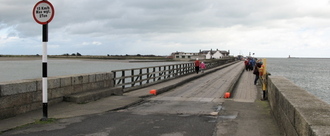
.png)
